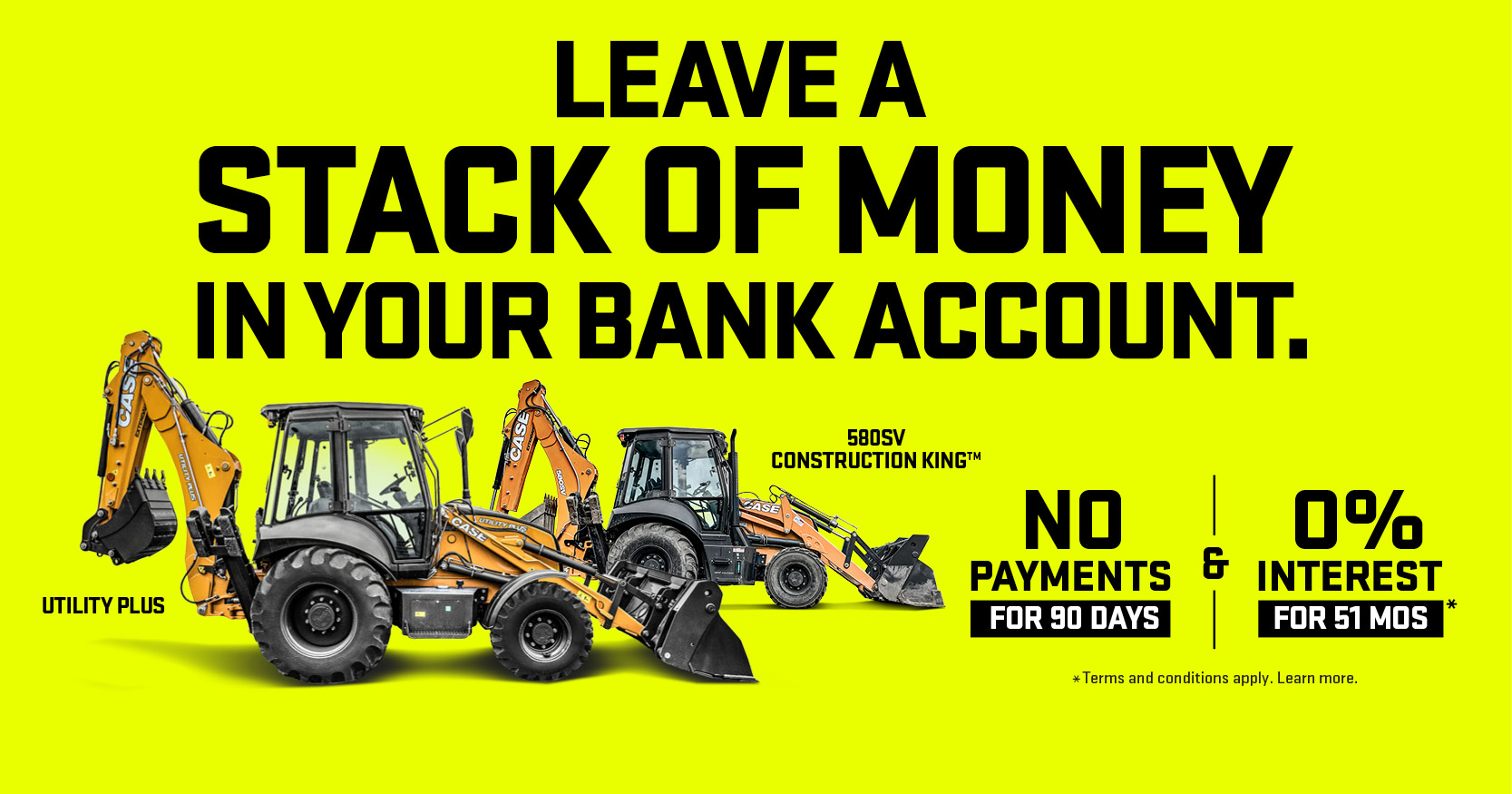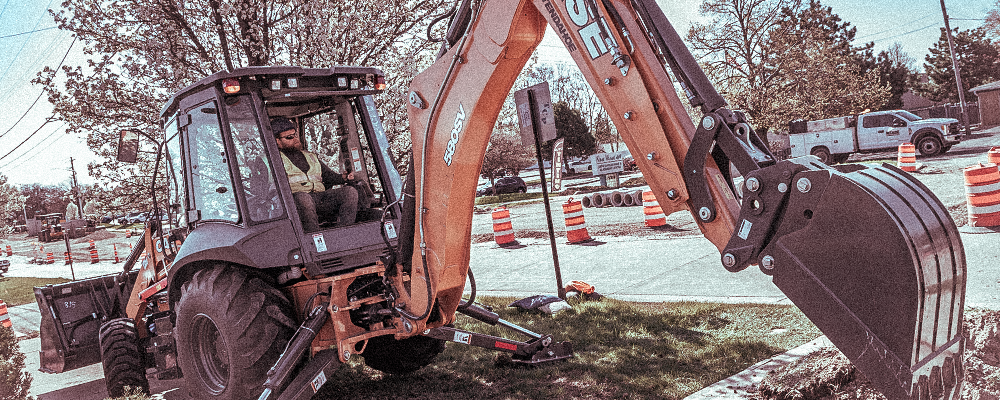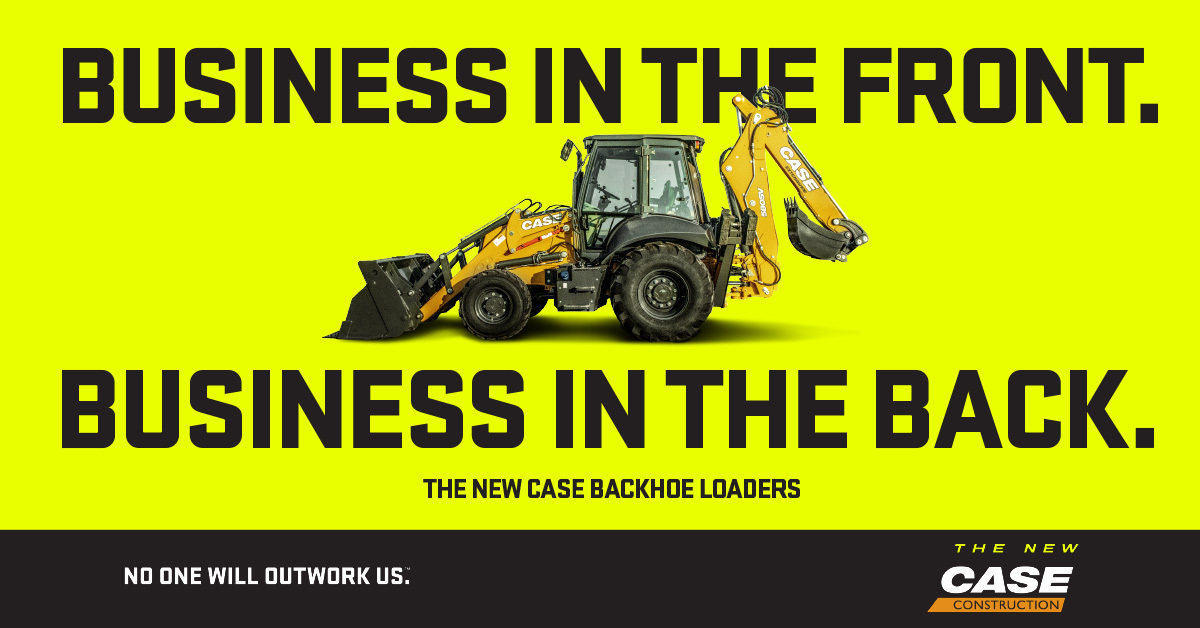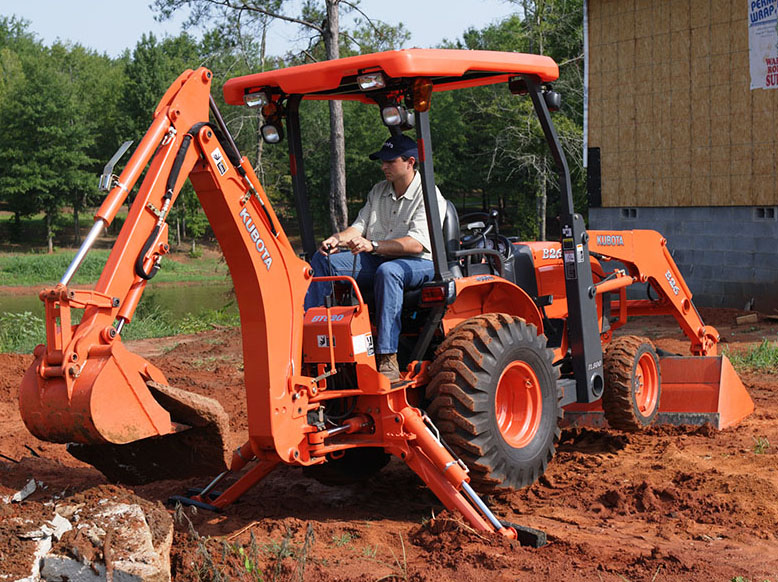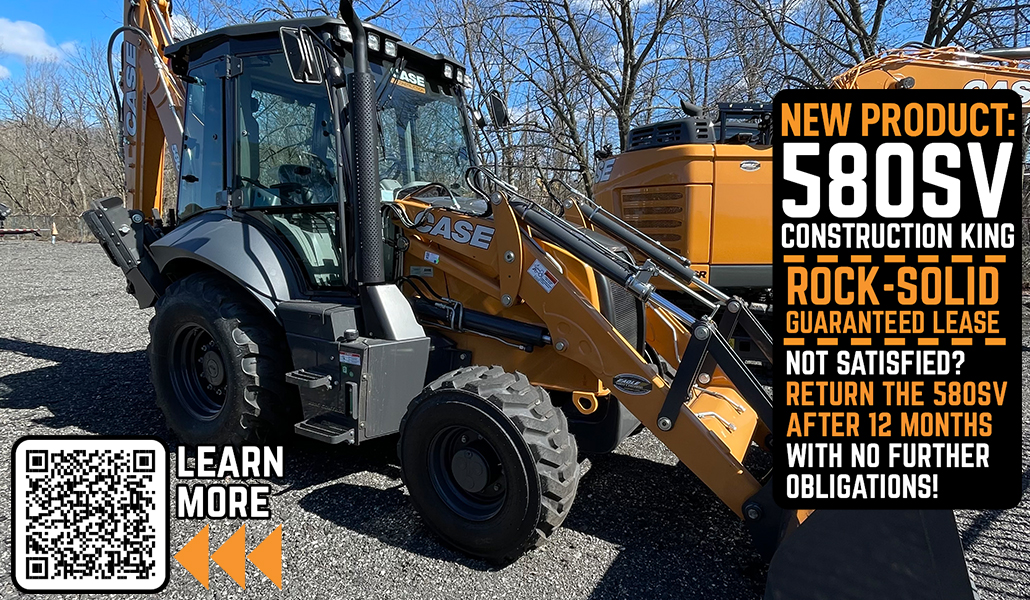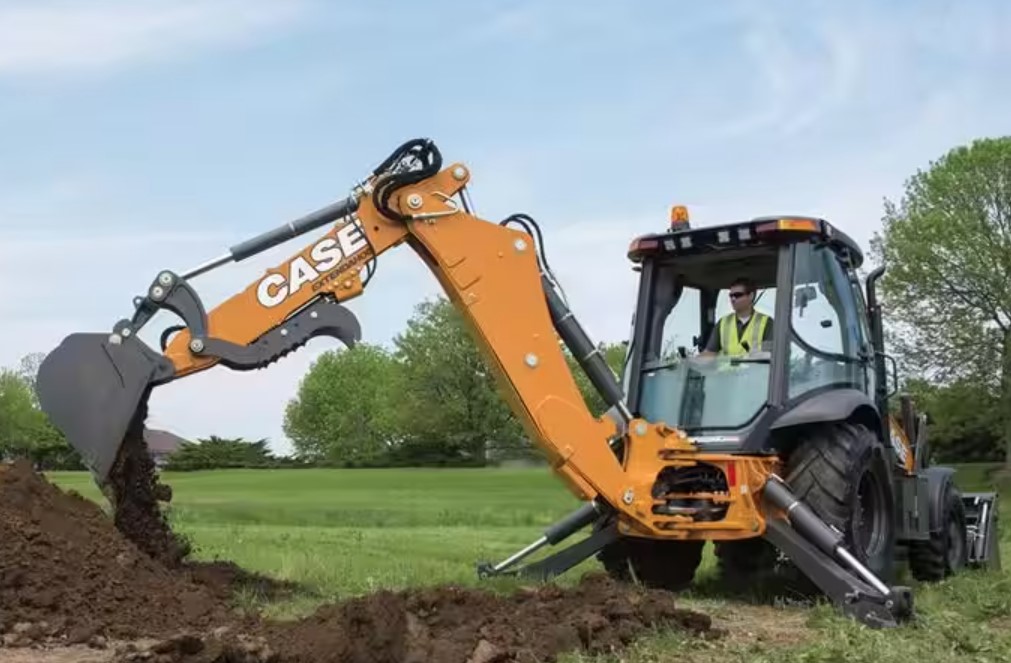Blog

Backhoe or Excavator? Choosing The Right Machine For Your Project
August 25, 2022Backhoes and excavators are two of the most common types of heavy construction equipment, but, due to the similar nature of the work they do, it’s not uncommon for them to be confused with one another. If you’re not a construction professional who deals with these machines on a daily basis, the distinct differences between the two machines might be hard to discern.
Backhoes and excavators are both highly useful pieces of machinery with different qualities, benefits, and limitations. But the design, dimensions, and abilities of these two workhorses are different. When deciding which of the two would be best suited to a particular job or task, it’s important to know what they can do, and why. With that in mind, let’s take a closer look at these two pieces of gear, to help choose the right machine for your job.
EXCAVATORS
Excavators are no joke; these heavy-duty machines weigh between 3,500 and 200,000 pounds. The excavator comes equipped with a boom, stick, and bucket to help you with your excavating needs. The 360-degree rotation of the house (cab assembly) of the excavator allows its operator to dig and move dirt without having to un-park and reposition the entire machine, saving time and effort.
Excavators are essential for many construction projects where they are used for landscaping, digging holes and trenches, lifting and placing large objects, and demolishing structures. They can also be equipped with various hydraulic attachments such as grapples or augers, equipping them to complete other more specific tasks. If you’re looking for heavy-duty digging or destroying, an excavator is your best bet.
BACKHOES
Backhoes feature a boom, stick, and bucket on the rear of the machine, plus a large bucket at the back. While a backhoe may seem somewhat similar to an excavator, there are many differences. The main differences have to do with rotation and movement. Whereas an excavator can achieve 360 degrees of rotation, the backhoe can only rotate 200 degrees. Despite this, backhoes remain extremely versatile and useful machines, fully capable of performing many of the same tasks as an excavator.
The backhoe’s name comes from its ability to “draw dirt back” when moving soil. The buckets on the rear of a backhoe are large, making them ideal for transporting lots of material. The backhoe is an excellent device for digging deep holes and trenches, and like its cousin the excavator, it can be fitted with external attachments such as a tilt rotator or auger. Backhoes (which have an average weight of approximately 17,000 pounds) are frequently utilized on farms as general-purpose digging machines, on urban job sites performing light-to-moderate labor such as precision digging, movement of bulk material and aggregate, or even towing or transporting other heavy equipment.
DIFFERENCES
Knowing the distinctions between these two pieces of equipment can help you decide which one is best for your project. Although backhoes and excavators are both used for tasks such as digging and excavation, there are three key areas in which they differ: size, rotation range, and versatility.
Size
The main distinction between excavators and backhoes is size. Excavators are significantly larger and heavier than backhoes. Backhoes, though smaller, are more agile, and are frequently used for smaller tasks, especially those required in close quarters where larger equipment can’t easily fit. The smaller, more compact backhoes are better suited for tasks like farming, minor construction, modest excavation, loading, and snow removal. The much larger and heavier excavators, due to their size, weight, and heavier load capacity, are more commonly used for larger tasks such as trenching, landscaping, and demolition.
Range of Rotation
As previously mentioned, the “house” or upper cab assembly on an excavator can rotate a full 360 degrees, whereas a backhoe cannot: a backhoe’s ability to rotate its loader arm is limited to approximately 200 degrees. This is a big distinction for operators. An excavator’s range of rotation saves time by preventing the need to physically move the excavator as frequently when working.
However, the lighter footprint of the backhoe somewhat makes up for this disparity, especially in tight surroundings, since the entire machine is, itself, smaller and easier to move when required.
Versatility
One of the many advantages of both excavators and backhoes is that they can be fitted with multiple attachments, making them more versatile. The backhoe, especially, provides an even wider range of mounting possibilities. Backhoes are also much more maneuverable because they are smaller and wheel-based, allowing them to be driven on public roads at speeds up to 25 miles per hour. This can be extremely useful if they need to be quickly transported or relocated between job sites. However in order to use their bucket or backhoe attachments, the backhoe must usually be parked in place, whereas an excavator need not be parked in order to use its heavy lifting capability.
PARTS OF AN EXCAVATOR
Since the very first hydraulic excavators were introduced in the late 1800s, excavators have been used to dig trenches, excavate land, demolish buildings, and more. Since their first appearance excavators have evolved considerably. Today’s excavators come in many shapes and sizes and have developed to accommodate a wide range of tasks. But their basic configuration has stayed the same.
An excavator typically consists of three main parts: the house, the undercarriage, and the arm. The excavator has remained a central element of the construction industry for over a century due to its supreme digging power and mobility.
The Undercarriage
The excavator’s underside is the lowest section. It enables the machine to transport itself from one location to another. Tracks, track frames, final drives, and blades (on certain models) are all components of the undercarriage.
The House
The house, which contains the power source and operator controls, is situated atop the undercarriage. The operator cab, counterweight, engine, and fuel and hydraulic fluid tanks are included in the house.
The Arm
The arm is the most recognizable portion of an excavator, extending from the excavator’s body and responsible for the majority of the machine’s work. The arm performs the up and down and closer-and-further motions that are the excavator’s primary function. The boom, stick, bucket, and any manipulatory attachments are attached to the arm.
PARTS OF A BACKHOE
The Undercarriage
The undercarriage (or “tractor”) gives the backhoe its mobility. It is equipped with large tires and contains the unit’s engine.
The Cab
The cab, situated atop the tractor, contains the controls for the front loader and backhoe. The chair inside the cab rotates, letting the operator switch from using the front loader to the backhoe.
The Front Loader
The backhoe’s front loader is a heavy bucket that is used to contain and transport materials, or to smooth surfaces.
The Backhoe
The backhoe assembly is equipped with a boom, a bucket, and a dipstick. These are used to excavate or lift heavy materials. To use the backhoe, the operator must first park the tractor and lock it in position by deploying its stabilizer legs.
ATTACHMENTS
Attachments can be used to fulfill a variety of purposes, depending on the job at hand. These attachments can change the function of an excavator or backhoe day to day and make it more versatile.
Bucket
Buckets are the most common attachment for excavators and are ideal for digging and scooping. They can also be used for grading stones or digging trenches.
Auger
Augers are used for drilling holes into the ground and removing ground surface material quickly and efficiently. They can range in size from 4 to 50 inches long and dig up to 32 feet deep, depending on their power source.
Breaker
Breakers do exactly what the name implies. If you need to break through a tougher surface than topsoil, opt for a breaker instead of a smaller jackhammer. Breakers can be attached to an excavator to break through concrete, asphalt, and stone.
Thumb
A Thumb can be a great solution if a bucket isn’t big enough. Easy to remove, it can be used in conjunction with the bucket to allow the excavator the ability to “grip” an object and is perfect for handling things like tree trunks, heavy pipes, or large concrete or metal items.
Couplers
Couplers can help make your job site faster and more efficient. They make it simple to swap out attachments, saving time and labor.
CONCLUSION
Backhoes and Excavators are both common on construction sites. They are both useful for digging and removing earth, although their differences in size, power, and range distinguish them. If you’re looking for either type of machine, contact us. We have a wide variety of models to choose from, so we’re confident that we’ll find the perfect machine for you. Let us show you how easy it is to rent or purchase an excavator or backhoe to get the job done in the most efficient manner.
Do you require the best quality construction equipment for your next project? Contact us now to discover why Eagle Power & Equipment is your one-stop shop for everything related to construction equipment sales, rentals, maintenance, and repairs.




